National Public Radio enjoys a "strong halo" among its extremely loyal listener base but that "core audience is aging out," Emma Carrasco, the broadcaster's chief marketing officer, told the PRSA National Conference on Oct. 12.
The FleishmanHillard, McDonald's, Univision, Nortel Networks, and republica alum is NPR's first CMO.
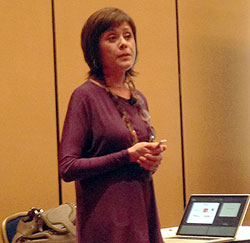 She outlined challenges faced in "selling" a marketing program. The "M-word" doesn't go over well with NPR's hard-nosed journalists and some independent member stations.
She outlined challenges faced in "selling" a marketing program. The "M-word" doesn't go over well with NPR's hard-nosed journalists and some independent member stations.
There's an element of "founders' syndrome" at the broadcaster as institutions like Cokie Roberts and Susan Stamberg still play important roles at NPR.
The CMO brought in brand expert Siegelvision to survey the disruptive media landscape and help her "figure things out."
Research showed NPR's audience ratings for "emotionally connecting with" and "trusted by" were off the charts compared to media competitors such as BBC News, Fox News, Wall Street Journal, MSNBC and others.
That audience, however, "underappreciated" and "undervalued" the role NPR plays in their daily lives.
One startling finding: 58 percent of Americans "never heard of" the iconic 40-year-old brand. The overall marketing goal is to cut the "never heard of" rating by 25 to 30 percent during the next three years.
Carrasco said NPR doesn't have to refocus its editorial content because its programming "resonates" strongly along the 18-to-64 age span.
The broadcaster though must re-purpose content, pushing it through platforms such as iTunes Radio, podcasts and social media to capture millennials with tiny attention spans of six-to-eight seconds.
NPR's job is to fill the pipeline with content that targets "gateway" listeners. It achieves that by offering music ("Tiny Desk" concerts featuring young bands), story-telling ("This American Life") and humor ("Wait, Wait…Don't Tell Me") content.
Carrasco is currently testing six different profiles among its 263 station owners who run 1,000 outlets. Those profiles are based on factors such as size of market or level of competition.
Some stations are eager co-brand partners with NPR. Others have used the NPR brand subtly in their marketing materials.
There are stations that have replaced the NPR identification with their own logo. They are reminded about trademark/copyright issues.
Carrasco said she has a laser-like focus on telling listeners and station owners, "Who we are and why we matter."
An audience member asked if criticism that NPR "tilts left" is valid.
"Just listen," Carrasco responded, adding that research shows NPR is "objective and fair-minded."
Carrasco said a liberal-bias may have existed at NPR a few years ago, but it does not now.


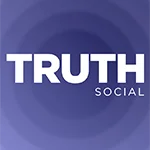 Trump Media & Technology Group today reported a $58.2M net loss on $4.1M in 2023 revenues, a disclosure that drove its stock price down 22.6 percent to $47.96.
Trump Media & Technology Group today reported a $58.2M net loss on $4.1M in 2023 revenues, a disclosure that drove its stock price down 22.6 percent to $47.96.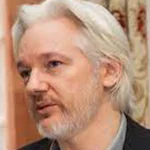 Barry Pollack, an attorney at Wall Street’s Harris St. Laurent & Wechsler, has registered Julian Assange as a client with the Justice Dept. “out of an abundance of caution.”
Barry Pollack, an attorney at Wall Street’s Harris St. Laurent & Wechsler, has registered Julian Assange as a client with the Justice Dept. “out of an abundance of caution.”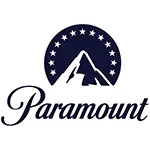 Paramount Global to slash 800 jobs in what chief executive Bob Bakish calls part of an effort to “return the company to earnings growth"... Rolling Stone editor-in-chief Noah Shachtman is exiting at the end of the month due to disagreements with chief executive Gus Wenner over the direction the magazine is taking... The New York Times broke the $1 billion barrier in annual revenue from digital subscriptions in 2023... Press Forward is investing more than $500 million to strengthen local newsrooms.
Paramount Global to slash 800 jobs in what chief executive Bob Bakish calls part of an effort to “return the company to earnings growth"... Rolling Stone editor-in-chief Noah Shachtman is exiting at the end of the month due to disagreements with chief executive Gus Wenner over the direction the magazine is taking... The New York Times broke the $1 billion barrier in annual revenue from digital subscriptions in 2023... Press Forward is investing more than $500 million to strengthen local newsrooms.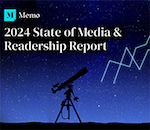 The majority of news articles are read within the first three days of publication, according to a recent report.
The majority of news articles are read within the first three days of publication, according to a recent report.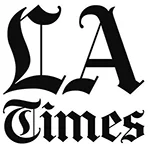 The Los Angeles Times gives pink slips to 115 people or 20 percent of its newsroom staff... TIME is also laying off about 30 employees, which is approximately 15 percent of its editorial staff... The Baltimore Banner, which was launched by Stewart Bainum in 2022 after he failed to buy the Baltimore Sun, added 500 subscribers per day in the three days following Sinclair Broadcast Group's deal to purchase the Sun.
The Los Angeles Times gives pink slips to 115 people or 20 percent of its newsroom staff... TIME is also laying off about 30 employees, which is approximately 15 percent of its editorial staff... The Baltimore Banner, which was launched by Stewart Bainum in 2022 after he failed to buy the Baltimore Sun, added 500 subscribers per day in the three days following Sinclair Broadcast Group's deal to purchase the Sun.


 Have a comment? Send it to
Have a comment? Send it to 
No comments have been submitted for this story yet.